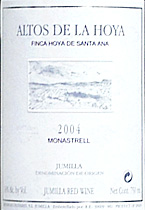|
This article was published in The 30 Second Wine Advisor on Friday, Aug. 18, 2006.
Wine Inflation
Some days I remind myself of my grandfather. Late in his life, he spent a fair amount of time checking prices and complaining about how expensive everything had become since the days of the good five-cent cigar. Reminding him that salaries had pretty much risen to keep pace with price inflation did not comfort him much; and nowadays I'm discovering similar attitudes in myself when I step into the wine store.
Let me tell you young whippersnappers: When I started writing about wine back in 1980, you could get a good bottle of French or Italian wine for $4 or so; a decent California wine probably went for a dollar or so less. Cheap wines from Spain, Australia, New Zealand or South America weren't a real option because, frankly, we barely knew that those countries made wine, and we certainly weren't likely to find them at most retail shops in the U.S.
The conventional wisdom among retailers at the time held that only wine-loving rich people would pay more than $6 for a bottle of wine, and then only for the rarest delectables from Burgundy or Bordeaux. Confronted with a fine Barolo that I really wanted to try, I talked a buddy into sharing the cost of a bottle so we could justify the experience. It was $7.50.
With memories like that (and never mind that my annual wage as a mild-mannered reporter for a major metropolitan newspaper in 1980 would barely reach poverty level today), it's hard not to feel "sticker shock" when I see the threshold price for "interesting" wines approaching $10 in 2006. Harrumph!
How much have wine prices really increased, if inflation is taken into account? Certainly if we consider the "cultish" wines at nosebleed price levels, the sought-after collectibles that the Usual Suspects rate with 90-plus scores, pricing has gone crazy. Few wine lovers with any sense are buying 2005 Bordeaux futures (although that caveat still leaves a sizable number of people baying at the moon with their wallets held open).
But in the more-or-less affordable $10 to $20 range where most of us look for our everyday wines, is inflation really out of control? Well ... maybe not. I Googled up a simple, quick Inflation Calculator, plugged in a couple of 1980 price points, and got back these results:
Viewed in this light, maybe today's $10 bottle isn't so outrageous after all. Particularly when it's as well-built and interesting a wine as today's featured item from Spain. Made by Bodegas Olivares in the Jumilla region from the Monastrell grape (which most of the rest of the world knows by its French name, Mourvèdre), it's a bit on the "international" side, as most modern Spanish wines are; but the earthy character and structural acidity and tannins of the grape bang through the fruit to make a wine that's an unusually good value. Even for an inflated $10.
Very dark reddish-purple, almost black, with a bright red-garnet edge. Dark fruit, plums and cherries, pleasant if a bit shy on the nose. More forward in the flavor department, ripe black fruit and mixed berries, mouth-watering acidity and chalky tannins. Alcohol is on the high side at 14 percent, but the wine carries it well. A splash (8%) of Grenache perks up the Monastrell in the blend. Very good value. U.S. importer: Vieux Vins Inc., Vineburg, Calif., A Rare Wine Co. Selection. (Aug. 17, 2006)
FOOD MATCH: It's on the verge of being too robust for delicate veal polpette, but turning the meatballs into "cheeseburgers" by stacking them on small eggy buns with caprese rounds makes a big difference, as the fresh tomato, basil and mozzarella bring the dish up to meet the inky wine.
VALUE: At $10 or less, this one is likely to make my year-end "Best QPR" list.
WHEN TO DRINK: Although Monastrell/Mourvèdre is an ageworthy variety and the wine shows good tannins and balance that suggest some potential for aging, the black solid-plastic cork doesn't inspire long-term cellaring. Drink up over the next year or so.
PRONUNCIATION:
WEB LINK:
FIND THIS WINE ONLINE:
|
 Altos de la Hoya 2004 Jumilla Monastrell ($9.59)
Altos de la Hoya 2004 Jumilla Monastrell ($9.59)